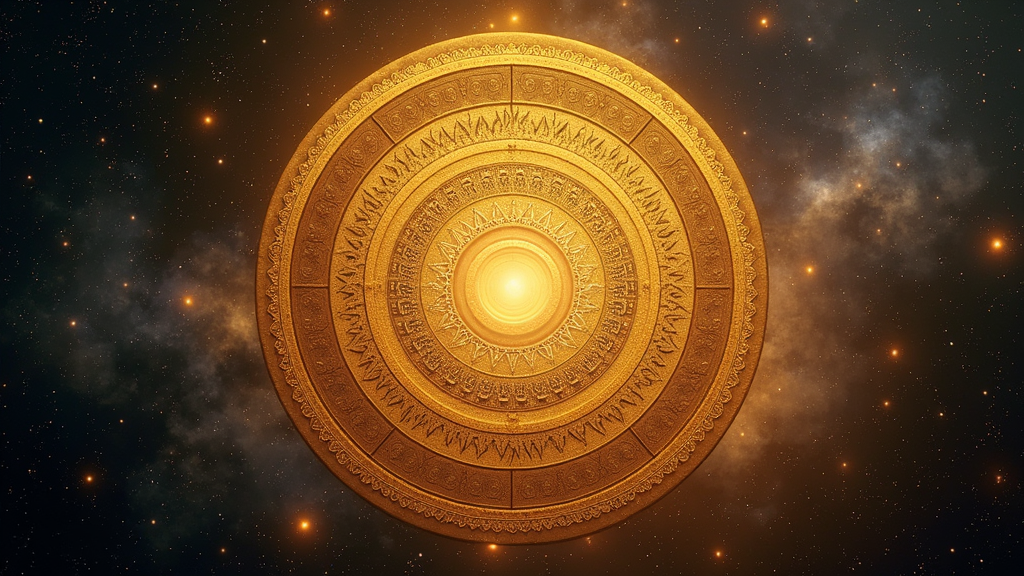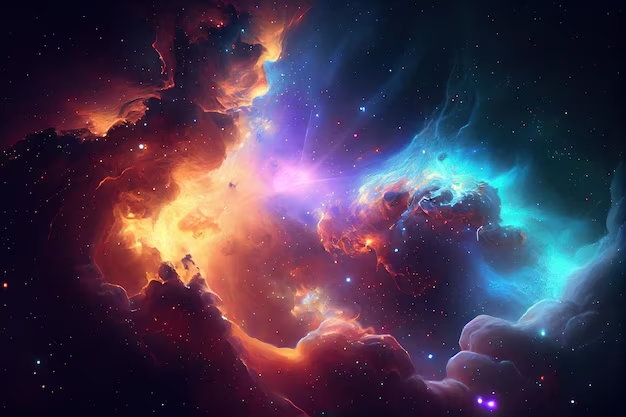The end of the Kali Yuga is a topic that really grabs the imagination. Whether you’re deep into Hindu philosophy, just curious about ancient prophecies, or looking to make sense of what’s happening in the world today, it’s something many people ponder. If you’ve ever wondered about when and how the Kali Yuga wraps up, what signs might point to its closing, or what’s supposed to come next, you’re in the right spot. I’ve spent quite a bit of time digging into scriptures, modern interpretations, and all the varying opinions, and I’m here to lay it all out in an easy-to-understand way.

Getting to Know the Kali Yuga: What Is It and Why Do People Talk About Its End?
The Kali Yuga is the last in a cycle of four Yugas described in Hindu cosmology. Each Yuga represents a period of time with its own characteristics. The Kali Yuga stands out for being called the “age of darkness” or “age of discord,” with moral decline, loss of spiritual values, and lots of confusion. According to Hindu beliefs, humanity cycles through these ages over and over, each with certain traits that affect how people live, behave, and understand the world.
Talking about the end of the Kali Yuga usually involves big changes. Some see it as a time of chaos, while others view it as a doorway to a new golden age, called the Satya Yuga. The idea isn’t unique to Hinduism; you can spot similar end-of-age stories in other spiritual traditions, though the details differ. The recurring interest in this topic highlights humanity’s curiosity about cycles, endings, and fresh starts.
Kali Yuga Timeline: When Did It Start and When Does It End?
Most traditional sources point to the start of the Kali Yuga around 3102 BCE, right after Krishna’s death. The total length, according to many Hindu scriptures, is 432,000 years. That makes our current chapter just a tiny sliver; somewhere in the earlier phases of the Yuga, by most accounts.
But not everyone sticks with this superlong timeline. There are modern teachers and interpreters who suggest the ages last just thousands of years, not hundreds of thousands. Some even claim the Kali Yuga is close to ending, or that its transition is already underway. There isn’t a universal agreement, and a lot depends on which texts or teachers you trust. Here’s a quick summary of the two main views:
- Classical View: Kali Yuga lasts 432,000 years (we’re only about 5,000 years in).
- Alternative View: Some believe each Yuga is just a few thousand years, and the Kali Yuga is on its way out soon.
Whether you like the epic numbers or you prefer the idea of fastmoving cycles, there’s no denying the end of the Kali Yuga is something people keep an eye out for. The debate among spiritual seekers and scholars ensures it remains a topic of lively discussion.
What Signs Point to the End of the Kali Yuga?
Scriptures like the Vishnu Purana, Srimad Bhagavatam, and Mahabharata outline a bunch of signs to look for as the Yuga winds down. Most descriptions talk about moral and social decline:
- People drift away from honesty and kindness
- Family structures break down
- Leaders act in their own interests, not for the people
- Religious rituals lose their meaning
- Natural disasters become more frequent
- Materialism and confusion increase
While it’s tempting to see these signs in today’s headlines, the texts usually list these as trends that grow stronger as the Yuga gets closer to its conclusion. Some believers even say the rise in technological dependence and overall stress fits what’s predicted.
It’s also worth mentioning that a lot of scholars read these as metaphorical, not literal. The signs act as warnings to help people live better, no matter what era they find themselves in. These metaphors encourage introspection and acts of kindness regardless of your background.
What’s Supposed to Happen at the End of Kali Yuga?
Many Hindu traditions say the Kali Yuga ends in a pretty dramatic way. One well-known story is the arrival of Kalki, the tenth avatar of Vishnu. The description goes like this: Kalki appears riding a white horse with a flaming sword, clearing away the darkness and restoring righteousness. Afterward, the new cycle—the Satya Yuga or Golden Age—begins, bringing peace and wisdom back into the world.
This ending is sometimes seen as an actual, future event, but other interpretations make it more about spiritual awakening. Kalki can be thought of as a symbol of the higher part of each person bringing light into chaos and confusion, not just a literal person on a horse. There’s room for mystical and practical readings, depending on how you view mythology and symbolism.
According to some contemporary thinkers, the transition doesn’t necessarily mean a sudden apocalypse. Instead, it could indicate a slow but certain process of global transformation—a move toward values like unity, compassion, and truth, which uplift humanity. This interpretation offers hope and a chance for personal responsibility, even as events feel overwhelming.

Tips on Exploring This Topic Without Getting Overwhelmed
If you’re interested in learning more about the end of the Kali Yuga, here are a few approaches that I’ve found helpful:
- Read Diverse Sources: Look into classical texts (like the Puranas) as well as modern commentary. Having multiple perspectives makes things clearer.
- Stay Curious, Not Fearful: These prophecies don’t have to be all doom and gloom. Many teachings frame them as time to reflect and turn toward positive change.
- Notice the Symbolism: The myths can be read as teaching stories meant to guide good living, not just straight-up predictions.
- Connect with Community: Forums, spiritual groups, and online resources offer a place to discuss, share experiences, and ask questions without feeling lost.
- Use Reflection: Think about how the changes described in the Kali Yuga show up in your own life. It helps make the ancient stories feel relevant.
It’s natural to want certainty, but embracing curiosity and embracing nuance can make the ride much more enriching. Try journaling, meditating, or attending group discussions to process the myriad viewpoints you come across.
Challenges People Can Face When Navigating Kali Yuga End-Times Discussions
It doesn’t take long to bump into some confusion on this adventure. Here are common hurdles I’ve seen and tips for working through them:
- Date Confusion: The numbers in Hindu cosmology can look wild, and different traditions measure time differently. No one has an official calendar that everyone follows, and debates over what counts as a “yuga” are everywhere.
- Fear-Based Interpretations: Focusing only on catastrophe can lead to anxiety. I find it more helpful to treat these cycles as reminders to find personal or collective balance.
- Literal vs. Symbolic: Not everyone agrees if the events should be read as literal history, cosmic timescales, or metaphors for inner transformation. Both have value; it really depends on your approach.
- Mix of Cultures: With the speed of information travel today, stories from different traditions can merge or get confused. Checking context and sources goes a long way.
Learning to sort out fact, opinion, and symbolism is key. Discussion, reading with an open mind, and giving yourself time to process make this subject far less overwhelming.
Kali Yuga in Everyday Life
Even if you don’t believe the end of the Kali Yuga is coming soon, thinking about what it means can help bring some perspective to daily life. I’ve noticed people use the idea of living in tough times as motivation for selfcare, better relationships, and staying honest, even when it feels like the world’s spinning out of control. Some folks use regular meditation, good deeds, or connecting with nature to bring “Satya Yuga” energy into their lives right now.
Stories about Kali Yuga remind us that no matter what the larger cycle is, our own actions matter. Small acts of kindness and honesty ripple outward, potentially influencing the environment and communities around us. You don’t have to wait for the Satya Yuga to start to bring a sense of peace and clarity into your world.
Frequently Asked Questions
Here are a few questions people ask about the end of the Kali Yuga, based on what I’ve read and discussed in forums and groups:
Question: Is there an exact date for the end of the Kali Yuga?
Answer: No exact date is agreed on. Traditional texts point to around 427,000 years left, while some modern sources suggest it could be much sooner. Most agree there’s no calendar event to circle; interpretations really vary.
Question: Is the end of the Kali Yuga going to be a disaster for everyone?
Answer: Although the stories describe chaos and collapse, many see it as a turning point or opportunity for renewal. Focusing on positive change is a pretty common theme in spiritual circles.
Question: Can someone personally experience the end of the Kali Yuga, or is it just a collective event?
Answer: Some teachings say every person has their own “Yuga” cycle inside them. This means you can experience a switch from darkness to clarity individually, no matter what’s happening globally.

Looking Ahead: Is There Something You Can Do?
While none of us can control epic world cycles, we can focus on growing kindness, wisdom, and clarity in our own lives. Some people use the stories and symbols of Kali Yuga as motivation to live more ethically and find purpose even when life gets weird. Whether you see the end of Kali Yuga as a soon-coming event or a lesson about living well during tough times, staying grounded and informed helps make the adventure smoother.
Want to take a deeper look? Check out Hindupedia’s Yuga overview for more details, or this explanation of Kali Yuga signs and stories. Jumping in with an open mind makes these ancient cycles feel a bit less mysterious, and a lot more useful for daily life and personal growth.

Grant Rayner